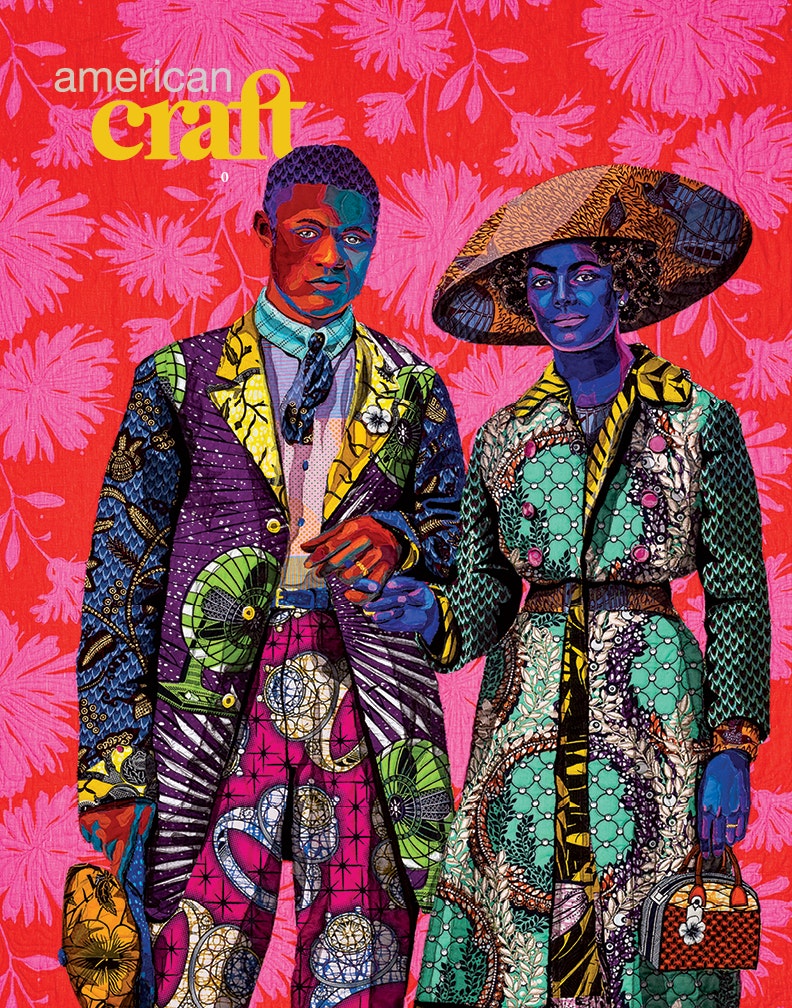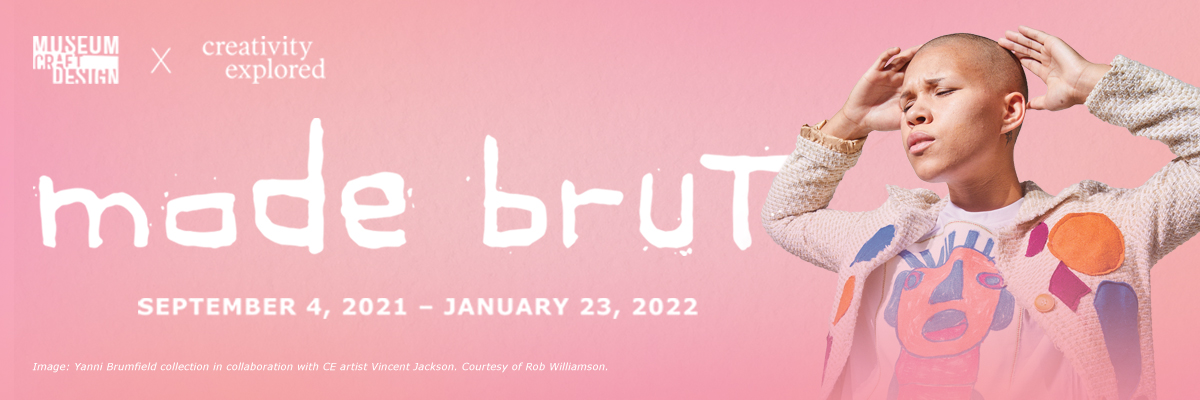The Queue: Amy Weiks & Gabriel Craig
Get to know the people featured in the pages of our magazine as they share what's inspiring them right now.
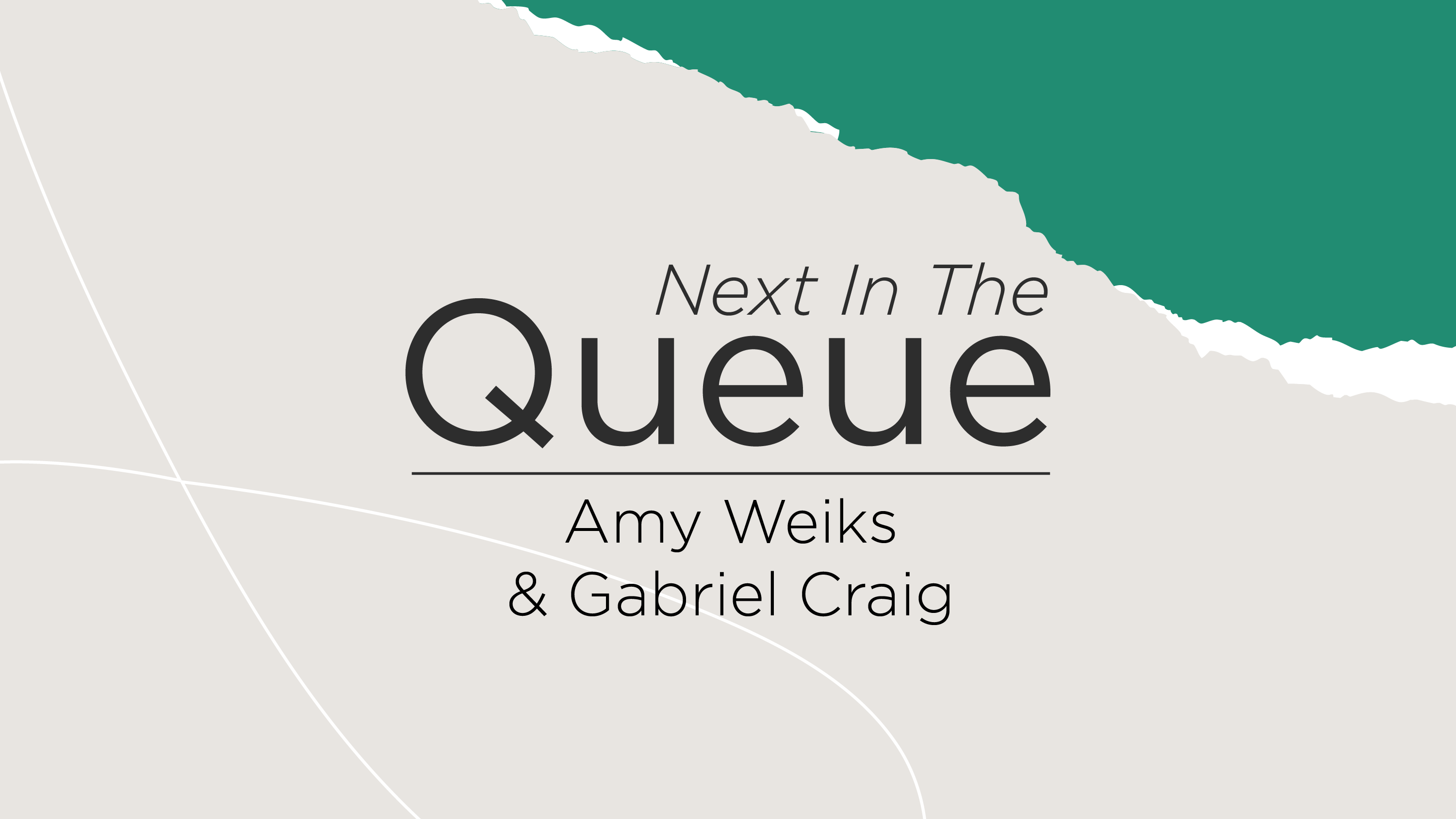
Welcome to the Kinship series of The Queue
A biweekly roundup for and by the craft community, The Queue introduces you to the artists, curators, organizers, and more featured in the current issue of American Craft. We invite these inspiring individuals to share personally about their lives and work as well as what's inspiring them right now.
Two artists' perspectives forged into one creative practice
Amy Weiks and Gabriel Craig are the co-founders of Smith Shop, a dynamic, craft-centric metalworking studio based in Detroit. You can see their work in the Market section of the Fall 2021 issue of American Craft.
@smithshopdetroit @amyweik @gabrielcraig_
Amy: I am a metalsmith. I embrace a spectrum of metalworking through material, scale, and form. As a co-owner of Smith Shop, I design, engineer, and create a vast array of metalwork, typically with an aim at both beauty and function. As our business has grown over the last nine years, our focus has evolved to creating work we find interesting and challenging. I’ve always been a collector of skills, sometimes feeling like a jack of all trades, but I find joy in the flexibility of working through a variety of processes and techniques, designing objects I’ve never designed before, and facing the challenge that these objects need to work, to function, and also inspire. In the early days when we were just starting, I approached my work more personally and intuitively with a broader range of material and expression. I don’t regret the focus these years of intense metalsmithing have brought. On the contrary, I fully embrace being surrounded by metal (ferrous, non-ferrous, and precious), machinery, and tools. I am confidently a “metalsmith”.
Gabriel: I am a metalsmith, writer, and craft activist. At Smith Shop, we utilize the potential of metal across scale, variety, and outcomes. For example, this past week we forged, machined, and soldered a pattern-welded steel and gold ring, and we also forged, machined, and welded parts for a garden pergola the size of a large garage. I view our work as falling within traditional outcomes of what handcrafted metalwork can be. We don’t specialize in one technique, style, or type of metalwork; we do specialize in making well designed and well executed metalwork, from jewelry to utensils to lighting to railings.
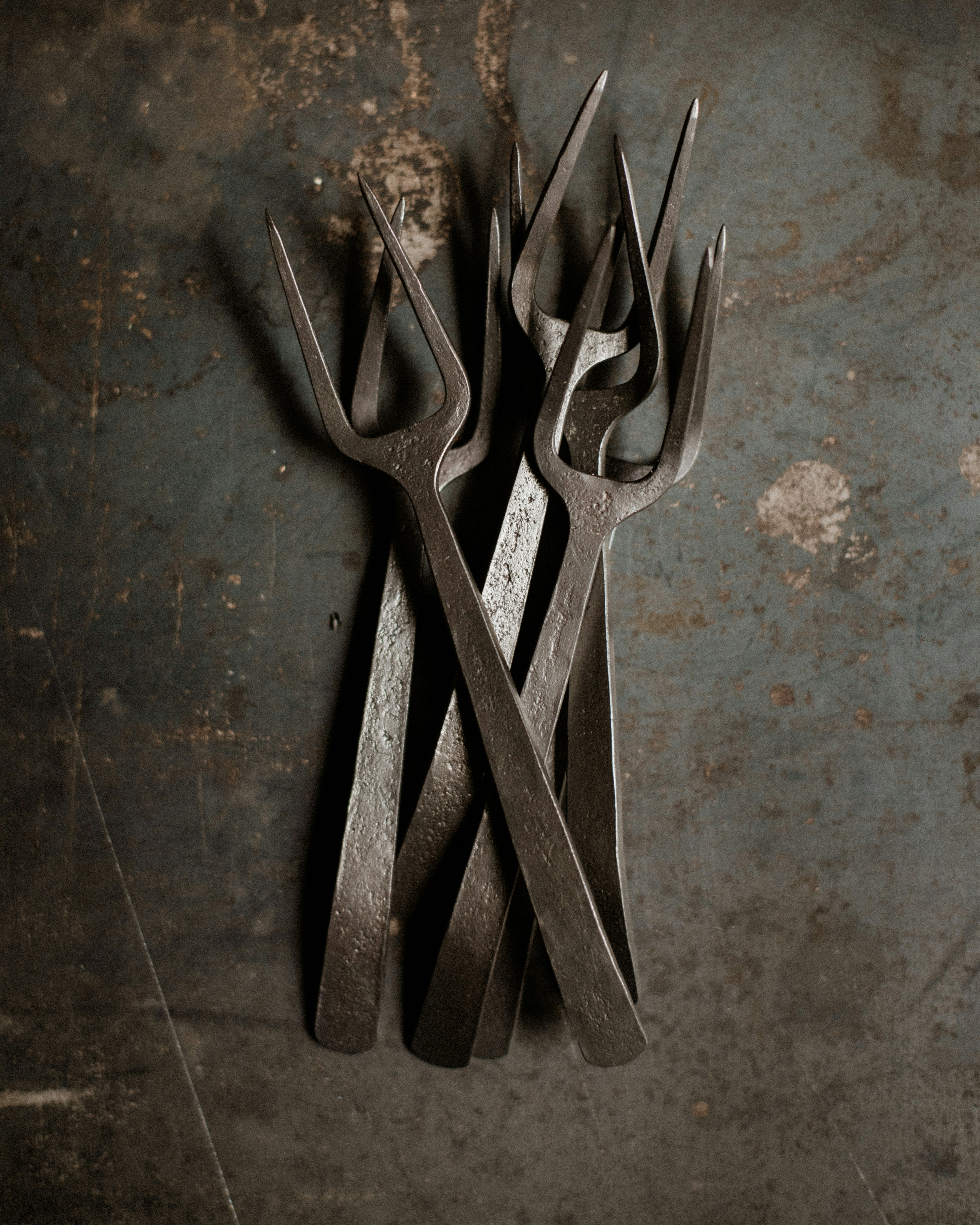
Appetizer forks from Smith Shop. Photo by Nate Johnson.

Photo courtesy of the artists.
Amy: The isolation of pandemic life shrunk my world and slowed the passage of time. The closing off of the outer world allowed me to really appreciate and be present in my own little pocket, with my family and my work. One of the most joyful ways I have found mindfulness is discovering the magic and beauty of the world through the eyes of my four year old daughter.
Gabriel: It may be too obvious an answer, but the work is what has kept me grounded. With the world in chaos and existential threats to our planet, civilization, and government looming, it is incredibly reassuring to enter the sacred space of creation using skills honed over two decades and breathe life in a static material, exercising total control over it. To exercise control over something (and not someone) in a time of turbulence is a blessing. It helps the world make sense in a very small way.
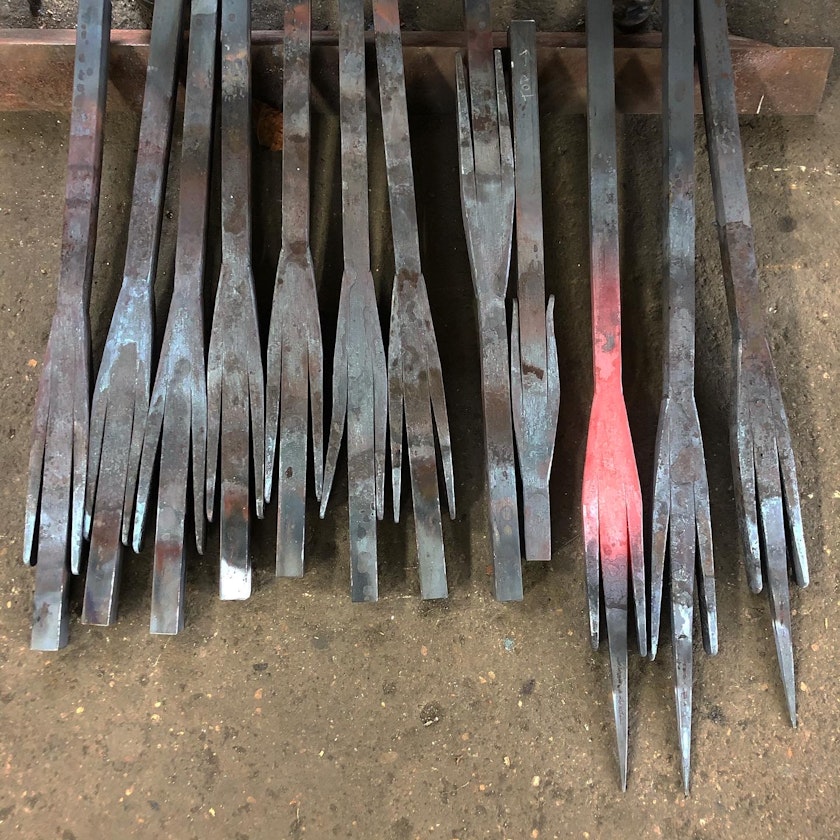
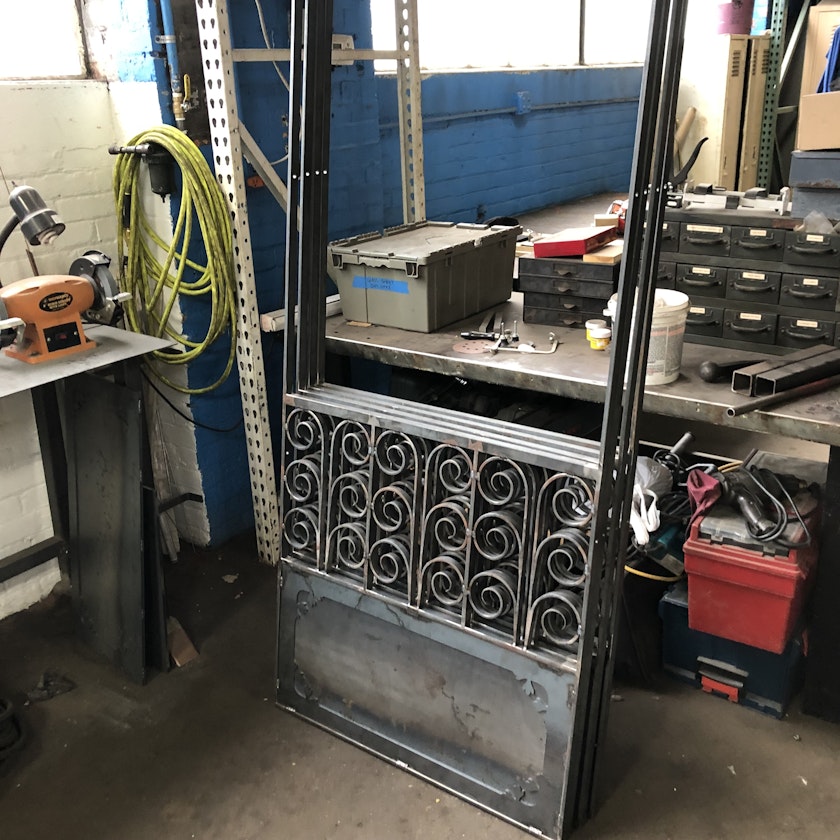
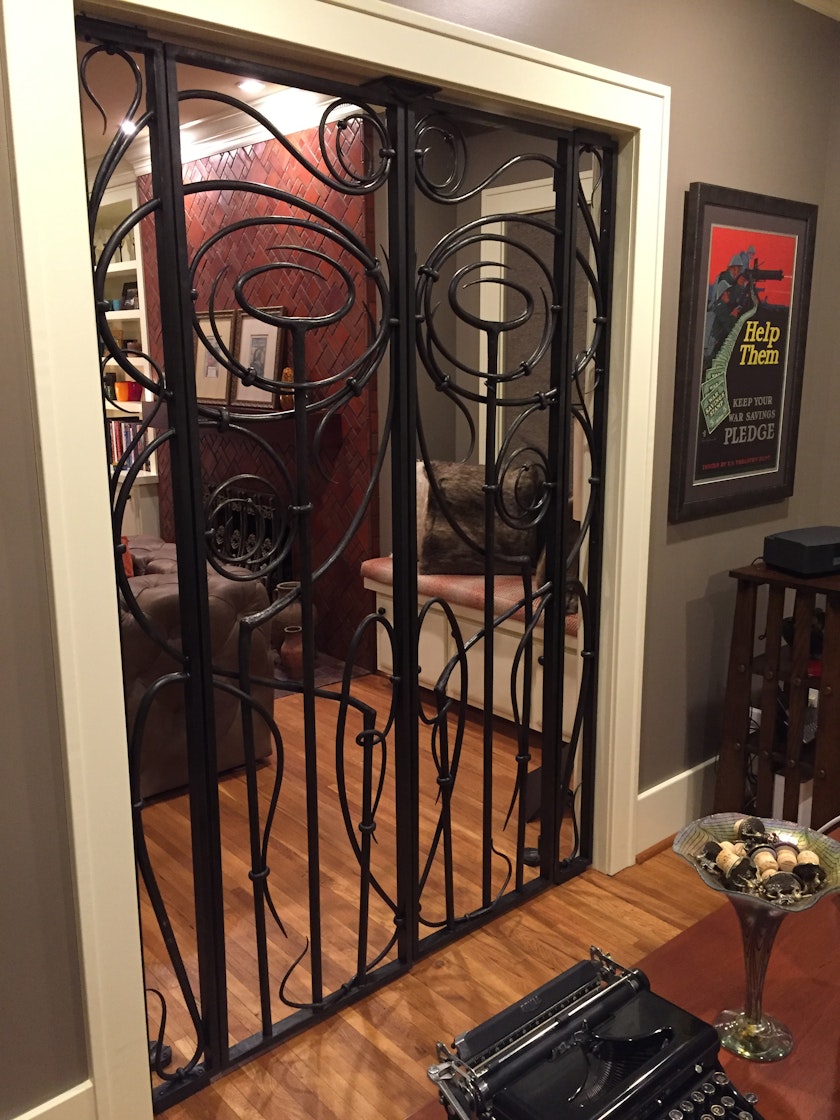
Photos courtesy of the artists.
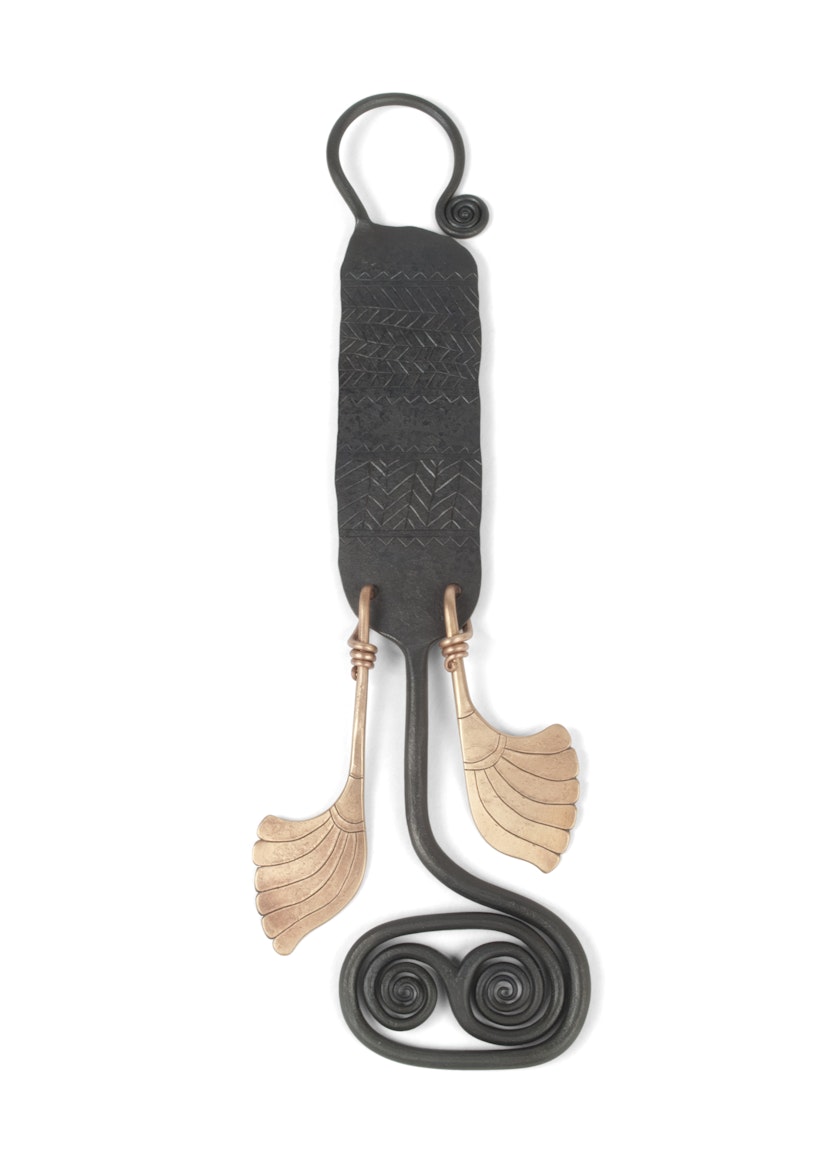
A clip brooch from Amy and Gabriel's Kin series. Photo courtesy of the artists.
Amy: My work has become almost entirely collaborative. Most of it happens with my husband and partner—we pass ideas and designs and physical pieces in progress back and forth, filtering them through our very different yet complementary sensibilities. The work also has kinship with the past, inspired by historical objects, ancient to contemporary.
Gabriel: It’s funny, Amy and I made a series of work a few years ago entitled Kin. Partly it reflected the choice to limit our materials and technical processes within the series, but conceptually it was an ode to the commonality of material, tools, and form language that we share with metalworkers over the millennia. We feel we are part of a community and a lineage.
Amy: Self doubt. I am highly critical of myself and my work and have had to learn to manage the expectation that others will be, too. Self doubt was certainly my biggest obstacle in graduate school. It hinders decision making and muddles reality. I have finally arrived at a place where I no longer fear failure or mistakes. Mistakes are frustrating but useful and grounding. Sometimes it means cutting apart a piece to fix it or having to start a project over from the beginning. It makes me truly appreciate the projects that go smoothly from beginning to end. The success is sweeter.
Gabriel: The barrier that weighs on me most as of late is the lack of affordable studio space in—wait for it—Detroit. (I know, people in Brooklyn must be rolling their eyes right now.) We were very fortunate and very resourceful in finding a building in 2018 we could barely afford. Today it would be simply impossible. The long-term stabilization of our overhead was critical to the sustainability of our practice. I worry about (BIPOC) artists' access to cheap capital, and I worry about the well intentioned and not-so-well intentioned developers erasing the industrial spaces that are the fabric of Detroit. A home studio may be within reach for a textile artist or jeweler, but you can’t blow glass or run a power hammer in your basement.
Gabriel: I have been perpetually writing and rewriting an essay about the structural inequities in craft education. (Sighs and looks into the middle distance at length.) I hope to have the courage to submit it for publication in due course.
Amy: I don’t think it’s possible for me to pick just one, but I would say the common theme of many of the podcasts I listen to is perspective. I find it vitally important to shift perspective by listening and learning about the experiences of others, both when the experiences are different from my own and when I can deeply relate to them. So I have to provide a list: Throughline, Code Switch, On Point, Don’t Ask Tig, The Daily, 1619, and The Moth. I should note that balancing the heavy with the humorous is key.
Gabriel: Not a podcast, but the absolute best thing I’ve done in the last month has been to subscribe to Amazon Music Unlimited and work my way through Pitchfork’s "The 100 Best Albums of the 1970s." I’ve listened to every album in order and am at about number 40 now. In listening to entire albums on lossless audio with good speakers, incredible depth has emerged. Artists I thought I knew have emerged as wonderfully complex, and artists I ought to have known have become fast favorites. Highly recommended soul-nourishing exercise for everyone.
Amy: The Soul of an Octopus: A Surprising Exploration into the Wonder of Consciousness by Sy Montgomery. The author approaches her subject with such intense focus, curiosity, patience, and respect. Her enthusiasm is palpable and contagious. As an artist, designer, and maker, reading works like this inspires me to approach my own work with intention, meaning, and appreciation. @sytheauthor
Gabriel: I was eagerly awaiting the release of Hero of Two Worlds: The Marquis de Lafayette in the Age of Revolution by historian, author, and podcaster Mike Duncan, which came out late August. I find the Marquis de Lafayette to be such a compelling historical figure. Born to the French aristocracy, he married rich at a very young age and then promptly disobeyed King Louis’ direct order by setting sail for America to fight in the Revolutionary War where he became something like an adoptive son to George Washington. He returns to France, writes the Declaration of the Rights of Man and becomes a central figure in the French Revolution. And if that’s where his historical significance ended it would be an amazing tale. Lafayette went on to play a pivotal role in each successive chapter of the turbulent and rapidly evolving French government of the early 19th century. This story is so compelling for me, especially at this moment because people on both sides of the political spectrum are attempting to reframe our view of late 18th– and early 19th–century history. Here is a man smelted in the crucible of the enlightenment and forged into the hero or three successive revolutionary epochs on both sides of the Atlantic. @mikeduncan
Inspired by the people featured in The Queue?
Dive deeper into their work in the pages of American Craft magazine. Become a member of the American Craft Council to get a subscription and help fund a range of nonprofit programs that elevate the craft community.

